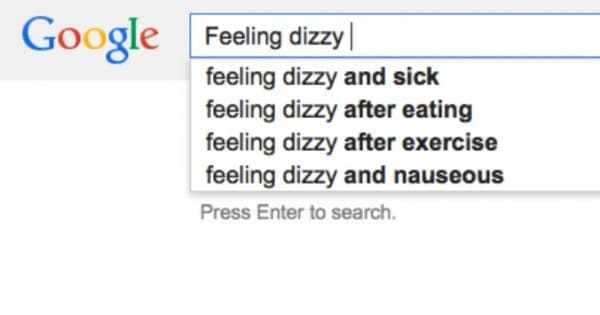
The sight of patients wielding printouts or swiping through “health websites” on their phone is common in doctor’s offices nowadays. Checking health symptoms online is something doctors have come to expect from their patients. As much as it is empowering patients, online health searches have also endangered their health, given the amount of unverified and spurious information available online. So much so that it has led to the coining of the term “Cyberchondria”.
With information on the Internet being more accessible to patients on their computer or mobile, it isn’t surprising that they resort to “Googling” their symptoms at the first sign of unease. And to a non-medical audience, this information could be enabling their worst fears.
Using fear to promote business
With Internet technology, medicine isn’t as noble a profession as it once was considered to be. Many small healthcare businesses, pharma companies and product companies publish health content online with the aim of promoting their own products or services. A study published in the Journal of Bone and Joint Surgery found that the top-10 search results for common sports injuries were commercial sites. These sites were sponsored by companies who were selling products for the diagnoses and treatment of these conditions.
For a user who is desperately seeking answers, such websites seek to further grow their concerns and perhaps even use that fear to convince them to make decisions that may be completely unwarranted or even dangerous.
However, this doesn’t have to be the case. Physicians can save their patients (and many other online users) by taking matters into their own hands. How? Patient education.
Does patient education mean patients won’t need doctors anymore?
On the contrary, it can be argued that publishing relevant health articles and advice online would reach a wider audience searching for this information on the web. The credibility of this information could mean that your clinic would become more discoverable and reputable online, in turn leading to more engagement from patients. Publishing original content will only seek to establish your practice’s expertise more definitively. Garnering a faithful online audience would perhaps lead to more referrals and business to your practice. This is particularly relevant for medical tourism, where patients turn to online recommendations to find potential caregivers in other cities or countries.
In short, patient education should be seen as an extension of your medical practice’s efforts to provide quality healthcare services to those in need.
How will provider-created health information be discoverable?
The Internet is a vast expanse of information. If health providers seek to reach out to their patients, how can they be sure it isn’t lost in this riot of data? Having said that, the best chances of reaching out to patients and those in need of health information is through the World Wide Web.
A personal web presence managed by a clinic or hospital allows it’s providers to educate and truly empower their patients. Most clinics or doctor’s offices have websites that serve as a digital business card. Patients, old and new, are immediately able to find and locate your practice by virtue of your web presence. Leveraging your website or patient portal for patient education would mean that these online visitors will be able to find health information that you endorse, that is factually correct and medically relevant.
Rather than depending on questionable sources of health information, a health blog on your organization’s patient portal/website allays unfounded fears and assures patients that help is at hand. It is easily accessible and discoverable to scores of Internet, and mobile users as well.
Ways providers can educate their patients
Gone are the days of providing leaflets and pamphlets to patients or having educative posters in your clinic. In order to ensure retention and reproducibility of health information, it is best to communicate with them using digital technology.
1. Blogs
Most clinic and hospitals create health blogs on the websites or patient portals. Providers practicing in the clinic can regularly post articles based on their expertise for patients. This serves as a source of relevant health information for all visitors. Tying this with patient portals means that returning users are likely to engage with other services that may be available on the portal, such as the EHR system or telehealth services.
2. Email newsletters
Patients can sign up for email newsletters from the organization’s website. This provides a periodic digest of the latest health news, medical research and public health updates that are relevant to them. Patients even have the option to subscribe to specific news relevant to their health concerns – like newsletters or blogs on diabetes, cardiovascular disease, women’s health, child care etc.
Tying this to their website or patient portal means that most of these subscribers can be organized in a contact database so that relevant communication can be sent to them periodically through an automated mailing or notification system.
3. Mobile applications
Given the growth in mobile phone and health app usage, it is only logical for health providers to use this as a means of communicating with patients. Apps like drawMD, PopQ, Heart Decide and the Health Network on the Virtual Practice app seek to educate patients about health conditions, tests, procedures, symptoms and latest health news provided by physicians or clinics.
4. Social media
Creating forums, discussion groups and pages for specific specialties or for each clinic and hospital on social media is a great way to engage with patients. Explaining complicated medical and health-related information in a simple and precise manner through social media postings is perhaps one of the main reasons that it is well-received by online users.
There is little doubt that providing relevant health information is the only way that providers can ensure the safety of their patients’ health. The Internet has been helpful in many ways, including improving the accessibility of healthcare. Checking for health information online is not entirely a bad thing, as it provides patients or their caregivers more information about their health conditions and how to manage it. It becomes potentially harmful when users resort to using websites to diagnose and treat their symptoms. Therefore, it is extremely important that providers step in to help their patients to make the distinction between truth and myth.



